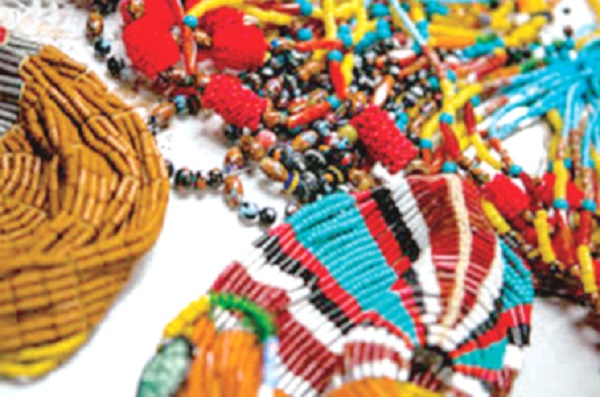Bidayuh man's multi-coloured beadworks much sought-after
Published on: Tuesday, December 18, 2018

Kuching: With his nimble fingers, he deftly threads the yellow-, black- and white-coloured beads.Occasionally, he turns to his mobile phone screen to take a look at a YouTube demonstration on the making of a beaded necklace.An hour later, the necklace, bearing a traditional Bidayuh motif, is ready. Dickson Noyen holds it up and flashes a smile, obviously satisfied with his handiwork.Dickson, 59, a retired teacher, is one of the few men involved in the beadwork culture Sarawak is well-known for and he is proud he has the skills to produce beautiful beaded accessories which are an identity of the womenfolk in the Bidayuh, Orang Ulu and Iban ethnic groups.
ADVERTISEMENT
He took up beadwork about five years ago as a hobby but eventually, it became a source of income for him when he started getting orders from his friends and the public."In fact, I'm getting quite a good income from it," he told Bernama. Dickson, who is a Bidayuh from Kampung Stenggang in Bau, Sarawak, also has a flair for fashion designing and took up sewing classes a year before went to beadwork."That was the time when I would teach English at a school during the day and learn to sew at night. Initially, I used to create designs for others to sew but later I myself started sewing after I became adept at it," he said.
ADVERTISEMENT
He developed an interest in beadwork after he realised that it was difficult for the locals, especially the Bidayuh community, to match their ethnic outfits with the appropriate beaded accessories."When I was sewing traditional outfits for Bidayuh men and women, I too found it hard to source accessories for the clothes.
ADVERTISEMENT
"This inspired me to take up beadwork so that I can produce the accessories myself," said Dickson, whose nickname is Kodek. His clothes and beaded accessories are sold under the brand name Kodek's Collections.Recalling the time he first tried his hand at making the traditional bead necklaces, he said he learnt through trial and error."I can't remember how times I tried and failed. But it didn't weaken my spirit because the accessories were actually easy to make, especially when you already have the materials and know what motif you wish to create," said Dickson."I also don't mass produce accessories with the same motif even though the demand is good. This is because I only receive small orders from people... they usually order one or two accessories each for their own use."This retired teacher learnt to make the beaded accessories entirely from books and YouTube videos. He would also buy some accessories, dismantle the beads and then put them together again."From there I learnt how to make different designs for accessories such as necklace, earrings and bracelets," Dickson said, adding that he prefers to focus on his own designs to create motifs using the four basic colours – red, black, yellow and white.Dickson, who gets a lot of orders from locals and outsiders for the 'panggieh' or necklace featuring the ethnic Bidayuh motif, uses beads imported from Indonesia and South Korea.Stay up-to-date by following Daily Express’s Telegram channel.
Daily Express Malaysia




